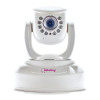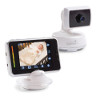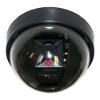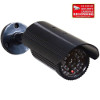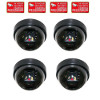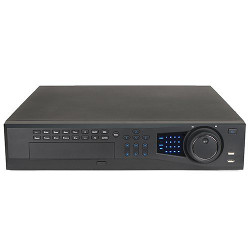
Surveillance Cameras, IP Network Cameras, DVRs, NVRs, Monitors, Detectors…
Security System Technical Guide-
What to consider when choosing a home security system.
Learn what components are used in a home or small business Surveillance System and how they work together.
The right system selection can be made when your solutions are at their clearest. Meaning you have the knowledge needed to move forward.
Let this guide help you move toward your goals.
Topics…
Click link for a quick send to that subject.
Reasons for having a surveillance system
What do you want to monitor
Types of Security Cameras
DVRs/ NVRs /Hybrids
Video Monitors and other methods to view cameras
Common features found on today’s security systems
Smartphone Apps and Remote access
Connectors, Cables and Hardware
How it all fits into one System
Real expectations
Technical Terms
Legal Issues with cameras
Warning about 2.4 Ghz Wireless

Reasons for having a surveillance system…
Get connected to your home-life while away…It is easier than you think…
Have your neighbors had an increase in vandalism or home break-ins? Maybe your back gate was open when you arrived home. At some point you’ll forget about it. Right? Wouldn’t it be great to see what exactly took place when the gate was opened, or what specific vehicles past by your cameras view the night a neighbors house was tampered with? Remembering the majority of open air security cams we will illustrated, make note of where you think those peculiarities will help secure your outside property. What about a carport to one side, hindering piece of your perspective? Is there a clearing, huge expanse that permits clear visual access? Then again, more probable, do you see a walkway, conceivable shaded and clouded by foliage, perhaps a couple of expansive trees as your eye meanders further away? On the other hand maybe your carport is a slope and you can’t see the entire thing. Observe these and proceed with your stroll around your home and property until this rundown is finished. One good quality, multiple channel/multiple camera system will serve as an invaluable tool you can use for years to come. Here are a few concepts to realize.
- Today’s simple to setup components speed up the technical configuring.
- Real-time monitoring of someone at door or entrance.
- Record video for reviewing past events when you were not present.
- Vacation anywhere and bring your front doorstep on your phone or computer.
- Security video reference is a great law enforcement tool.
- Record / Monitor/ Review remote locations such as lake house, or small business.
- Allows peace of mind for family and property.
- Criminals are more likely to avoid a property with surveillance cameras.
- Large selection of features to suit almost any situation.
- Some property insurance providers may lower rates due to a security camera system installed.

What do you want to monitor…
Plan ahead and know how much area you want to cover.
Get it down on paper to see a collection of needs for your surroundings.
The result may be as negligible as a front passage cam or profoundly thorough, observing each part, or “zone” of your yard and outside property. Basic situations are passages, walkways and carports, yet every property is remarkable, as is each land owner’s needs, so arrangement is subject to a few variables. The result may be as negligible as a front passage cam or profoundly thorough, observing each part, or “zone” of your yard and outside property. Outside security cams, or a multi-cam frameworks, screen any open air range you pick.
Below is a small Security Camera Buyers Guide Questionnaire of things to consider.
- How many channels/ cameras do you need?
- What type of security camera should you use?
- Does the camera(s) need to be wireless or can it be a wired camera?
- Does the area get dark, or is it always lighted?
- Do you want to monitor indoor, outdoor or both?
- Will the system camera be out-of-reach or could people access the camera?
- Will the camera be hidden or obvious.
- Does the system camera need extra weatherproofing for your location?
- Do you need audio (sound capability) from the system?
- Will the cameras point-of -view cover someones private property or infringe on privacy rights?
Types of Cameras…
Security Camera Formats Explained
Love TBs of Storage More and More-
There are two main categories of security systems with cameras, these are Centralized and Decentralized. Now some will say analog and digital. This used to be true a couple of years ago.
But increasing demand for HD ‘goodness’ has led to a boom in the digital camera market converting most DSP processing of video camera data to HD Digital. And as such has bridged the gap between decentralized only using the analog platform, to full, rich 1080P security cameras. Check out our security camera resolutions page for side by side, er.. top to bottom in this case, images of the common formats for video resolution. Now IP cameras are high definition and non-IP cameras can be high-definition. Wide or narrow viewing angles grab different aspects of the same scene. An outdoor camera may overlap its view onto an adjacent business and in this case you may lean toward a narrower field of view. 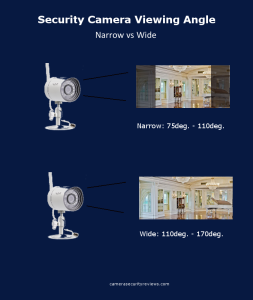 Wide angles of 110 degrees or more would be great for a room to get a wall to wall blanket of coverage.
Wide angles of 110 degrees or more would be great for a room to get a wall to wall blanket of coverage.
So back to the two categories…each one has pros and cons to them. Decentralized is a DVR based system comprising of cameras, a central recorder and processor for video, and a monitor to view recordings and user interface menus. This may be called CCTV(Closed Circuit Television) in many circles. Many multi-channel outdoor security systems are of this type. Apps allow cloud access so decentralized systems aren’t really isolated from remote locations completely. All of this is contained in a home network array(No access to internet or outside world,to a point.) Centralized systems or IP Network cameras give flexibility for remote viewing and access to recordings.
Again Apps make this a easy step-by-step process. The concept behind centralized cameras is a self-contained system, comprised of a camera, storage medium, an internet residing address(the address your camera lives).
Network Cameras-Easy Wireless Home Monitoring
Wireless IP Security Cameras
Easy, single cameras connecting to your home or apartment’s WiFi router and power outlet is all you need to view your home live with a WiFi Camera. From amazing 1080P to Ultra HD 4K resolution, IP cameras are taking the industry by storm with their simple setup and use. A stand alone PTZ(point-tilt-zoom) camera is limited to your imagination.
Cameras are built with a photo optic lens just like its bigger CCTV brothers. The light sensing image senors are typically CMOS and again are much like the outdoor cameras in larger systems. ONVIF standards keep the controls and functions within the industry compliant language making it easy to use cameras and switchers from many different manufactures together. DSP circuitry transmits sensor data to a DVR.
Digital file data is then compressed into the MPEG-2 type, and then forwarded for recording externally, or an internally installed SD media card. Set it up in your garage for cars or bikes, the baby room for kids, or as a web-cam to communicate with other family members. Funlux has turned into a reliable brand with many satisfied customers to date. 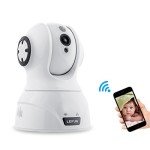 Annke has several IP network based cameras as well as DropCam, with step-by-step instructions to get you up and running today. Looking for something with a Live Security Feed to your phone? Review any point in time or always keep up with live feeds straight to you, via your choice of smart phone, desktop PC, tablet, or even a specialized security system with independent monitor control.
Annke has several IP network based cameras as well as DropCam, with step-by-step instructions to get you up and running today. Looking for something with a Live Security Feed to your phone? Review any point in time or always keep up with live feeds straight to you, via your choice of smart phone, desktop PC, tablet, or even a specialized security system with independent monitor control.
Perhaps, a wide viewing angle 170 degrees or greater is necessary for front door situations? You’ll be surprised how easy it is. Need help setting up your IP camera? Visit our IP Setup Guide for more help with that.
Night vision functionality is done with IR LED sensors that illuminate at dark. The human eye cannot see this light spectrum, but a camera can. That is essentially how night vision in a security system works. Two-way audio is not as common but is offered on a few network/IP cameras. Find the latest IP Security Cameras Brands, or simply a Web network cam for media production. Home Security Systems with apps for smartphone is now the standard the industry standard. Many of our Complete Systems offer an app for remote viewing.
Security Cameras with SD Cards
Interesting enough is not all IP cameras are indoor cameras. Pyle makes an amazing outdoor range of PTZ IP cams that are weather resistant. We have something that is just right for you. Select a category to explore the thousands of items currently in stock.
-
Bullet Cameras
Many of today’s cameras are of the bullet type. This Security Camera Buyers Guide will cover all the common styles of chassis. Named for its streamlined, projectile shape, this cam is best suited to a divider or roof mount, making it perfect for passageways, for example, a patio zone where it works best pointed in one heading. It doesn’t ordinarily have ability to move course or zoom in. From a gatecrasher’s viewpoint, it is not difficult to see the direction its indicating, enlightening him in on the best way to evade its sight. They offer wide viewing angles with highly adjustable mounts allowing full range of coverage from one mounting point. Bullet security cameras range from basic analog to 1080p HD high signal definition. Their simplicity does reveal the direction the security camera is pointed. Also there is generally no protection from vandalism if low and accessible. Choices include indoor, outdoor, or both. Either Wired Camera or Wireless Camera systems are another option.
Examples of Bullet type security cameras include:
-
Dome Cameras
Dome Cameras are a second popular type. They often make use of internal motors for changing viewing direction controlled by PC or DVR software similar to PTZ (pan-tilt-zoom) style cameras. Dome security cameras come in basic analog to crystal clear image HD high signal definition. The outside covering dome can conceal the view direction of the internal camera lens. Protection from vandalism or tampering is strong with the Dome camera type. Generally Dome Security Cameras are built for indoors and outdoors.
Examples of Dome type security cameras include:
-
Box Cameras
The Box Camera gets it name from its shape. Generally squared corners and very little cosmetic styling. Box security cameras can accept different lens assemblies such as a wide angle, and zoom lens. Surveillance cameras have evolved somewhat from box cameras yet they still serve useful in their simplicity and price.
Examples of Box type security cameras include:
-
IR Night vision Cameras
The IR stands for Infra-Red and is basically a specific color of light the human eye cannot see. Security Cameras can see this spectrum of light and are able to simulate a camera flash bulb while not producing a bright visible light upon the subject or surroundings of the surveillance camera. IR cameras do this through the use of LED’s (light emitting diodes). There is a distance limit due to the output power of the LEDs and is generally around 20ft-50ft from the camera IR LEDs. Nearly all security cameras today have some form of IR or night vision capability.
Examples of IR or Night vision type security cameras include:
-
Game Trail Cameras
Game Trail style cameras are designed for long term outdoor use. These cameras are typically used in secluded areas and incorporate motion detection to trigger recording mode . IR night vision in also a standard feature among most models. Trail cams have cosmetic details such as no glare finish and camouflage coloring to avoid being easily spotted in wilderness environments.
Examples of Game Trail type cameras include:
-
Hidden Cameras
Hidden Cameras can be located just about anywhere you can think of. They can be disguised as any object or just be plain out-of-site.
Examples of Hidden Cameras include:
-
IP Cameras
The general function of sending video to your computer screen has gathered many cameras to be labeled IP cameras, Webcams, or even Network cameras. IP Cameras let you send video directly to a network. Giving you the opportunity for viewing on any internet browser, anywhere in the world. Cameras can include additional insurance against interlopers. Simply connect to Wi-Fi connection or wired router. Next configure the networks new device with the included software or app. Models may function as PTZ cameras with remote control of adjustment movement. Ideal for outdoor coverage of a large area, a pan, tilt, zoom security camera has the ability to move and capture different angles, which gives PTZ cameras the capability of doing the job of several fixed-sight cameras. A PTZ security camera can be pre-programmed or controlled by an operator in a remote location.
Examples of IP Cameras include:
-
Back-Up Cameras
Automobile gadgets are made for every part of a car or truck, even underneath. Placing a camera at the rear of a vehicle may seem odd until it helps you park in a tight spot one day at the store. These little, almost hidden cameras are now standard equipment on many makes and models of vehicles. Providing blind-spot elimination and distance grids to aid in parking. Car backup cameras are here to stay. Features such as night vision, and wide angle lenses give a great experience for the driver. Made to withstand the elements with completely sealed housing and cable connectors.
Examples of Car Backup or Rear View Cameras include:
-
Baby Monitors
Baby Monitors give peace of mind for loving parents when children are in a different room or floor of the home. Video type baby monitors let parents see the environment from another room or floor. IR night vision is a common feature among monitors with video capability. Audio monitors offer visual feedback through LED readout. Some models offer two-way communications. Built for indoor use only.
Examples of Baby Monitors include:
-
Wireless or Wired Cameras
Wired Cameras: They may offer a clearer picture than remote cams, and more dependence concerning streaming, yet outside, the wires may be in risk because of climate and other open air vulnerabilities. Often wired security cams must be placed in spots where they can meet the fundamental outlets. Wires may be hard to shroud, making it clear to anyone, who will attempt to evade the scope of the cams.
Remote Cameras: Other wise known as IP cameras. Wireless cameras can live on your home WiFi network and connector to your NVR via porting and address connection. They are very flexible, undercover (no obvious wires), simple to introduce, and a snap to migrate as the property holder sees fit. These cams are perfect for open air establishment, which can be generally difficult.
See more security cameras here wired and wireless security cameras
-
Fake Cameras
Fake Security Cameras or “Dummy Cams” look real and FEEL real. These types are built without video electronic. Many will incorporate LED lights to present a “Power On” effect adding to the “REAL” feel. By not using actual circuitry, the cost is dramatically lower. Also, there is no DVR/NVR, monitors, connectors, and takes no time to review recordings. Very simple. Would be thieves will not know if they are being monitored or not. Built for indoor or outdoor use.
Examples of Fake Security Cameras include:
DVRs/NVRs/Hybrids…
These components make up the data storage and video processing portion of a security system.
It provides a link between camera signal data and the monitor screen the video and information is displayed on. Functions such as motion detection, audio channel recording, time/event stamping, alarm logging, output trigger activation, record quality settings, and direction detection are enabled thru the DVR portion of the surveillance system.
DVRs-
DVRs have two classes of recorders, stand-alone and PC based. Stand-alone units have all components such as hard drive, video detection and capture software, and input/output jacks housed together in a steel or plastic box. PC based DVRs use plug-in cards as an interface to the software and storage devices. Both types typically support many types of cameras depending on brand and model.
FPS-
Frames per second must be taken into consideration when creating a home security system. The DVR will state a total FPS rate, such as “120fps”. The cameras used with this DVR will each use a portion of the FPS rate.
For example: A DVR with total FPS of 120fps-
| 1 camera uses 30fps | 1*30fps=30fps | 120fps-30fps = 90fps remaining |
| 4 cameras use 30fps each | 4*30fps=120fps | 120fps-120fps=0fps remaining |
Storing data or video is done on either an internal hard drive or external storage device. The size of these drives is always increasing to satisfy the users demands for high video definition and speedy delivery to a network.
NVRs-
DVRs have two classes of recorders, stand-alone and PC based. Stand-alone units have all components such as hard drive, video detection and capture software, and input/output jacks housed together in a steel or plastic box. PC based DVRs use plug-in cards as an interface to the software and storage devices. Both types typically support many types of cameras depending on brand and model.
Video Monitors and other methods to view cameras
Monitors-
Monitors are the component of a security system that lets you see exactly what your security cameras see. Viewing can be done on a large television with an appropriate input, or a small smartphone with browser features. Also, some monitors are mobile dash-mounted types for such uses as Rear View Cameras. A living room TV with the correct input type can make a great viewing platform. Or a computer monitor in a bedroom. Its really up to you where and how you monitor your surroundings.
Common features found on today’s security systems
Multiple Channels-
How many cameras do you need? How many can you use? Today’s mega-sized DVRs and NVRs often come equipped with 4,8, or 16(and sometimes more)channels to build your complete array of surveillance. Many times our complete packages will include enough cameras to get your system started, but leaves additional channels unused to build on to at a later time.
IR(night-vision)-
This is one the the handiest features available. IR LEDs will light up the subject and not give off any human-eye visible light. The quantity of LEDs in a given camera will determine how intense the light given off will be and also the useful distance of the illumination. Nearly every camera built today contains this prized function.
Mobile Apps-
Smartphone Apps for security cameras are really a lot of fun to use. They put you right in the action from anywhere an internet signal is found.
Other Resources:
Learn more about Home Security Systems and Products from another great site like Techhive and see what’s cooking on their end too!

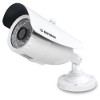

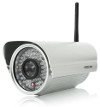
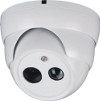
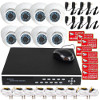
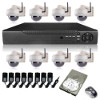
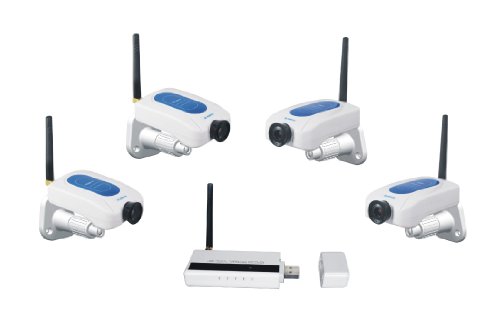


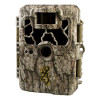





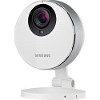
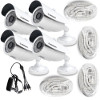


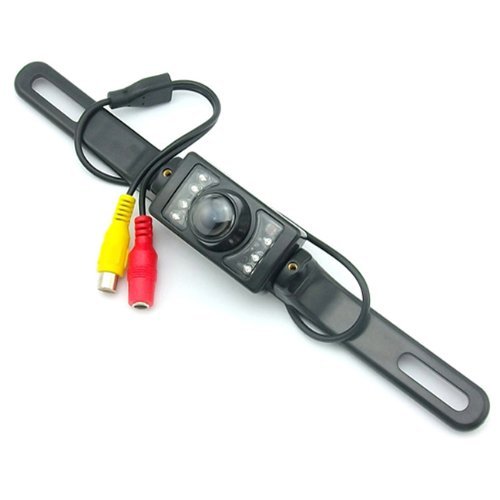 Koolertron QL CMS001 N
Koolertron QL CMS001 N